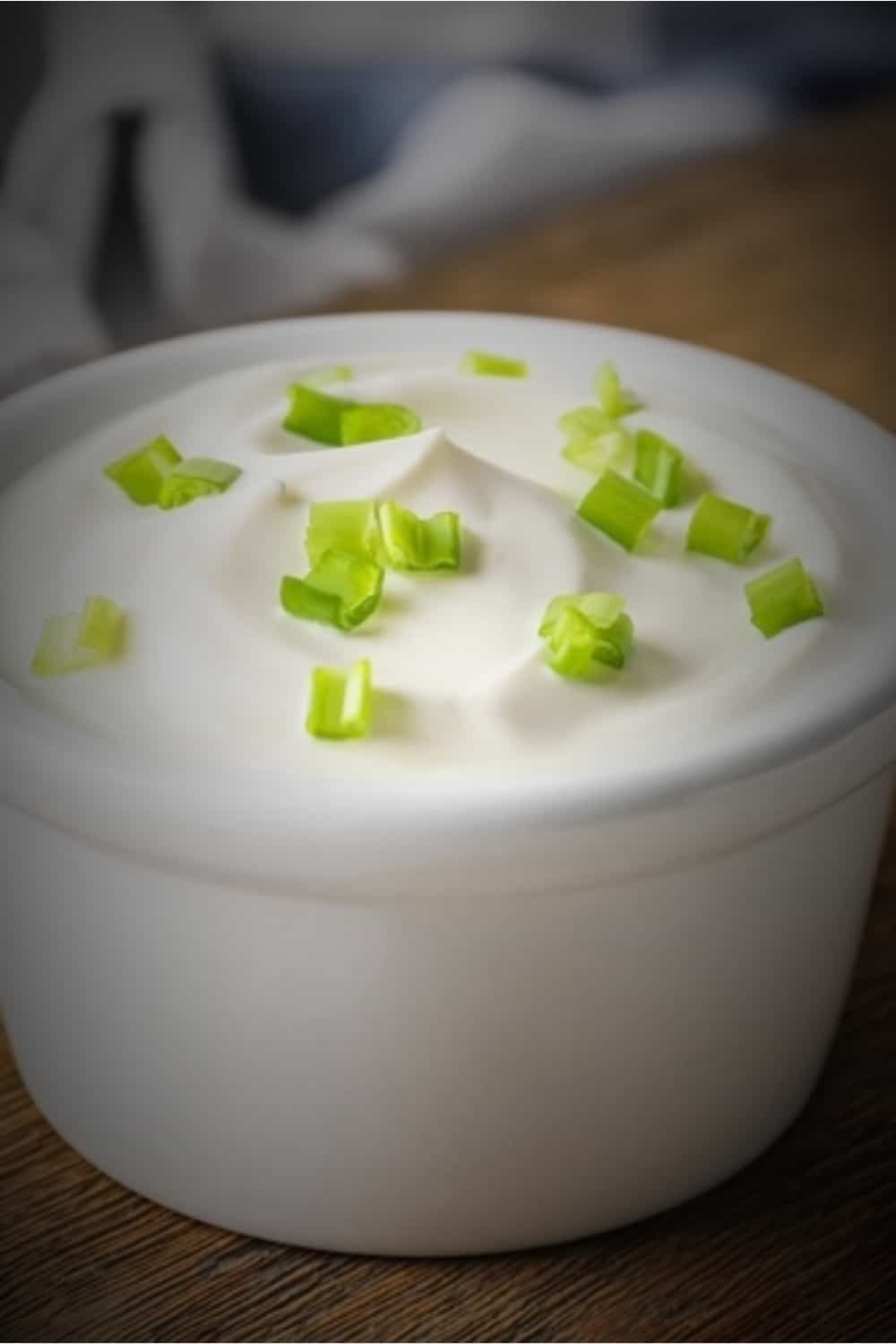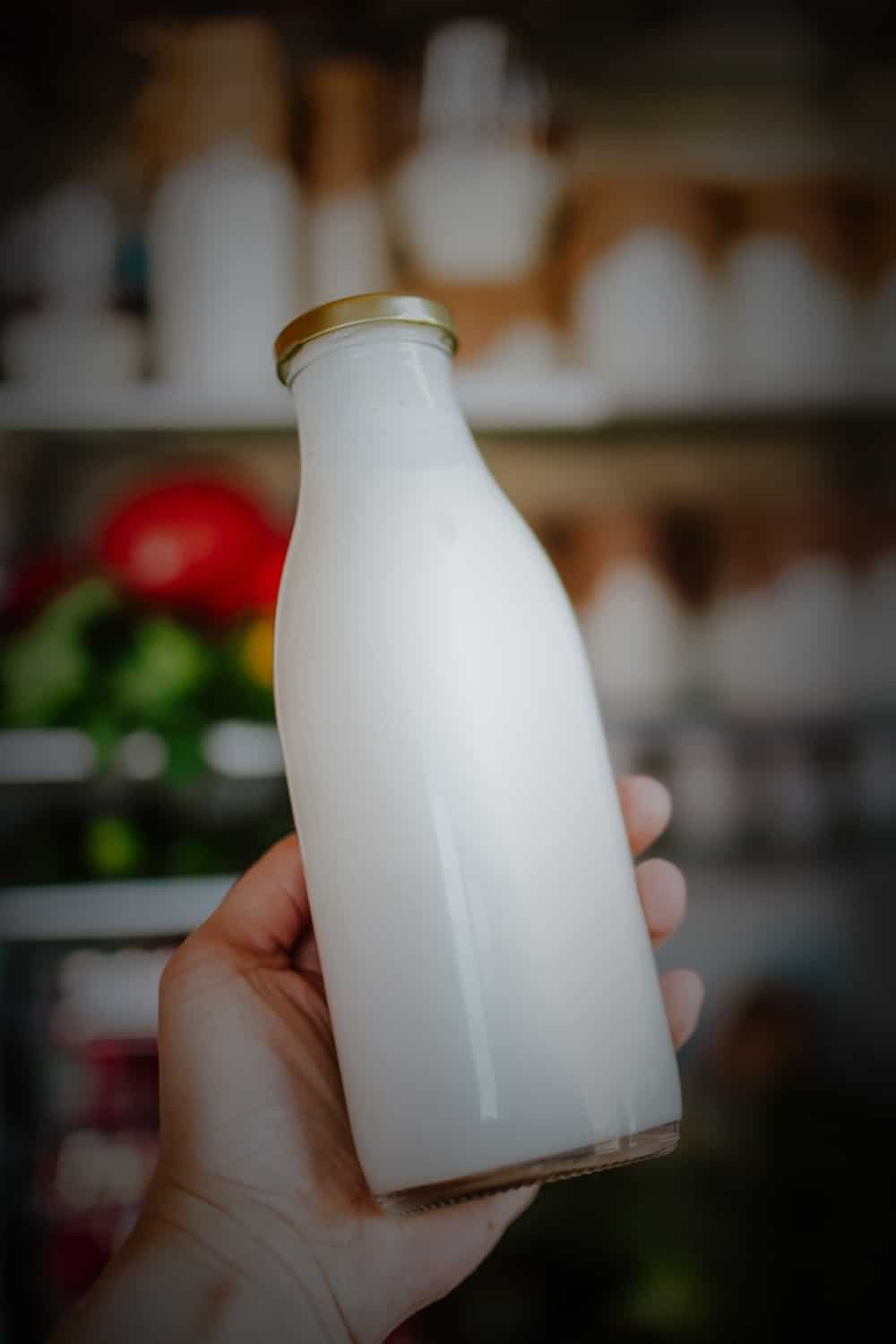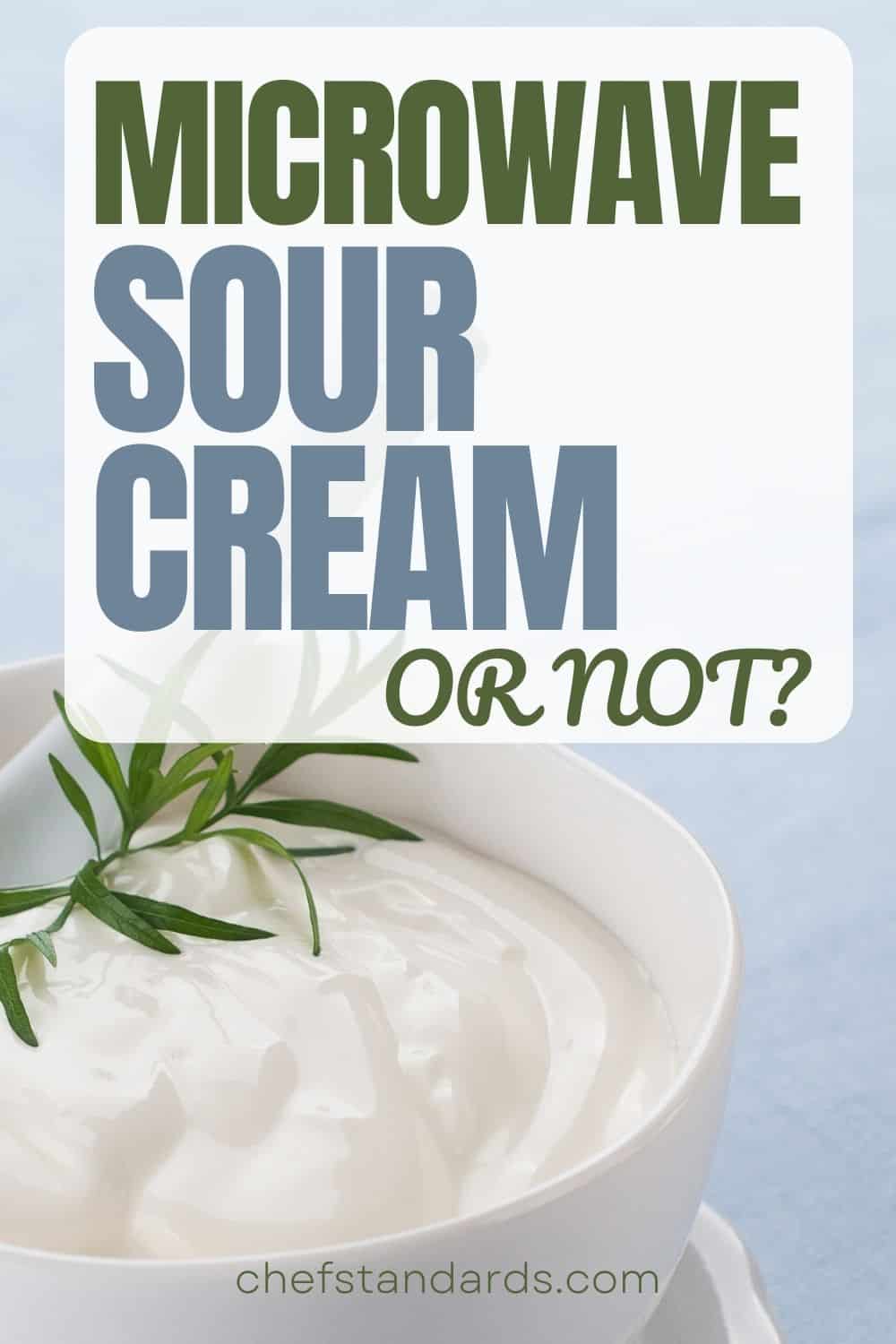Most of us can’t imagine tasty burritos and potato chips without some sour cream. And many other delicious foods, especially those that contain melted cheese, incorporate it as well.
However, sometimes we have leftovers and don’t know what to do because we don’t want those tasty bites to end up in the trash. So the question arises whether one can microwave sour cream.
Like many other popular ingredients, sour cream can also be microwaved, but that doesn’t mean you can just do it however you want.
It is very important to be aware of the pros and cons, some safety and quality issues, as well as tips and tricks that will help you do the right thing.
Why Should You Microwave Sour Cream?

Sour cream is a sensitive food that can be microwaved, but it won’t end up as perfect as it was before. So, there must be some good reasons to go through this process. And there are a few reasons why you might choose to do this.
• This method can be a quick way to warm up a dish that contains sour cream, as microwaving is faster than other heating methods.
• If your sour cream or a dish that contains it has been stored in the refrigerator, it might be cold and not as enjoyable to eat. In that case, microwaving it for a short period of time can help warm it up and make it more palatable.
• Sour cream is usually combined in a dish that contains melted cheese. Microwaving it can help to melt the cheese and mix it with the sour cream to create a creamy, delicious topping.
• Finally, microwaving can help soften the dish and make sour cream easier to quickly blend with other ingredients.
What Are The Potential Disadvantages?
When there are pros, there are always cons as well. And microwaving sour cream certainly has some slight disadvantages, especially if you don’t do the thing right.
• Most types of sour cream are dairy-based products that contain proteins that can denature and cause curdling when exposed to high temperatures. This can lead to curdling, resulting in an unappetizing taste and texture, especially if heated for too long.
• Aside from curdling, separating is also an issue since microwaving can cause the fats in the cream to separate. This leads to a somewhat oily texture, making the sour cream less appealing and difficult to incorporate into dishes.
• Microwaving can also result in uneven heating, which can lead to warm spots and overcooked or undercooked portions, which can affect the overall quality of the dish.
• Finally, high heat can break down the nutrients and good bacteria in the sour cream, which can result in a less nutritious product.
Is It Safe To Warm Up Your Sour Cream?

Generally, if you do things right, warm sour cream will be safe for eating. However, you have to be aware of the fact that sour cream is a highly perishable food product.
This means you need to handle it properly before and after microwaving it. This is especially the case with leaving your sour cream outside.
Dairy-based products, in general, can not stay at room temperature for more than 2 hours.
This is because room temperature falls in the category known as the temperature danger zone (40-140 degrees F). At these temperatures, harmful bacteria tend to grow rapidly and you all know what these nasty creatures can do to your health.
So, if you are not planning to microwave your sour cream at a temperature that will kill those bacteria, you need to refrigerate it to slow down their development.
After microwaving it, I would recommend consuming that sour cream immediately because it won’t be appetizing if left out longer, and it can also spoil if left out for too long.
I also wouldn’t recommend you put it in the fridge afterwards because its quality will deteriorate rapidly.
Does The Type Of Sour Cream Influences Your Choice?
Yes, definitely. The type of sour cream can be very important when deciding whether or not you will put your sour cream in the microwave.
Namely, the regular sour cream that most of us use is actually a full-fat cream. This type of sour cream is the best type for microwaving and it has the least potential to generate negative effects.
There is also reduced-fat sour cream and this type is not as suitable as the full-fat version. Reduced-fat sour cream contains 25% less fat than regular ones, so it has a thinner texture.
Because of that, it is more sensitive to high heat and it heats up more quickly, which can easily result in more deteriorated texture and consistency after the process.
Out of all types, non-fat sour cream separates and curdles the easiest, so I wouldn’t that recommend you microwave it at all.
However, if you are on some sort of strict low-fat diet or you just don’t like the cream that contains fat, you can microwave it eventually. But I would recommend you to reduce the power to low to minimize the negative effects.
How To Microwave Sour Cream Properly?

After reading all this, if you eventually decide to microwave your sour cream, it is important to know how to do it the right way. Also, it’s important to reheat leftovers safely. So here are the few simple steps you need to follow:
• Before you do anything related to microwaving, it is very important to let your sour cream reach room temperature first. It is best to leave it outside for about 30 minutes, as this will help it to heat more evenly in the microwave.
• After that, it is important to choose the microwave-safe dish or container, and not to microwave it in the original sour cream container.
• Before microwaving, make sure to give your sour cream a good stir to help distribute any liquids or solids that may have separated.
• If you need to warm up a large batch of sour cream, divide it into smaller portions and microwave them individually before transferring the warm sour cream to a larger bowl.
• Place a microwave-safe lid over the container to minimize splattering.
• Microwave over medium heat in 15-second increments per tablespoon of sour cream. Stop and stir it every 5 seconds to evenly distribute the heat.
• After this time frame, use your sour cream immediately, as it can quickly separate and become runny again if left sitting for too long.
Can You Reheat Leftovers That Contain Sour Cream?
NOTE: You shouldn’t reheat leftovers that have been left out for more than 2 hours outside the fridge or for 1 hour when the temperature is above 90 °F, as stated by the USDA.
Although your favorite burrito or any other food that contains sour cream won’t be the same after the process, you can eventually reheat it in the microwave.
However, if there is any chance to remove some sour cream that is inside, it is best to do that, let the rest of it heat in the microwave, and then add that sour cream afterward.
If you eventually do that, let the leftovers cool down to room temperature and then add the sour cream.
You can always do this when the sour cream is used as a topping. But, when it is used as a filling or if it is hard to separate it from the rest of the dish, you can microwave it all together, but at low heat.
However, I have to emphasize that it is much better to use some other methods, like for example reheating on the stovetop or in the oven.
It will take more time to reheat, but these are better choices because they help distribute the heat evenly, eventually helping you to achieve a better-quality dish.
Things To Remember Before Microwaving Your Sour Cream
Finally, I will provide you with all the important tips you need to be aware of before you decide to microwave your sour cream or leftovers containing sour cream. These will help you to minimize any negative effects and make your dish more appealing.
• First, never reheat sour cream in the microwave multiple times because that can cause it to break down and separate, resulting in an unappetizing flavor and texture.
• Do not microwave sour cream that has been left outside for more than 2 hours because there is a high risk of harmful bacteria growth.
• Never microwave it in its original sour cream container because chemicals used to make the container tend to be released when heated in a microwave.
• Always remember to cover the microwave dish with a lid or paper towel to prevent the moisture from evaporating too quickly, which can cause it to break down and separate.
• It is always better to heat the full-fat sour cream in the microwave because low-fat and nonfat creams tend to separate and curdle easier on higher heat.
• No matter what type of sour cream you are microwaving, it is important to do that on low heat or at least medium heat because high temperatures tend to cause the sour cream to break down and separate, killing all the healthy bacteria.
• Always divide the sour cream into smaller portions to heat individually when warming large amounts because large amounts of sour cream can overheat and curdle or separate very quickly.
• Finally, do not let your portions of sour cream stay in the microwave for more than 20 seconds because it will lose its quality.
P.S. Here’s how long sour cream is good after the expiration date.

